 In order to cooperate with the Dalian Education Bureau’s “Dalian Education Digital Classroom” initiatives during the pandemic, our school developed related courses for high school and middle school students during the extended school closure for “quality ability training.” Since the launch on February 27, the entire school has worked together, with all teachers actively fighting against the numerous difficulties posed by the pandemic, tirelessly creating micro-courses. In just over a month, 39 teachers completed the production of 221 micro-courses. As of April 30, Dalian Tiantu Limited Television has adopted 185 high-quality micro-classrooms. Starting from March 3, these premium courses have been broadcast daily on Dalian Tiantu Cable Television’s channels for first and second-year high school and middle school students, and are also available on online platforms such as China Mobile’s “He Education” platform, China Mobile’s “Migu Video,” and China Telecom’s “Internet + Classroom,” allowing for on-demand viewing at any time.
In order to cooperate with the Dalian Education Bureau’s “Dalian Education Digital Classroom” initiatives during the pandemic, our school developed related courses for high school and middle school students during the extended school closure for “quality ability training.” Since the launch on February 27, the entire school has worked together, with all teachers actively fighting against the numerous difficulties posed by the pandemic, tirelessly creating micro-courses. In just over a month, 39 teachers completed the production of 221 micro-courses. As of April 30, Dalian Tiantu Limited Television has adopted 185 high-quality micro-classrooms. Starting from March 3, these premium courses have been broadcast daily on Dalian Tiantu Cable Television’s channels for first and second-year high school and middle school students, and are also available on online platforms such as China Mobile’s “He Education” platform, China Mobile’s “Migu Video,” and China Telecom’s “Internet + Classroom,” allowing for on-demand viewing at any time.
Our school’s micro-courses include: “Video Switching Techniques,” “Making a Simple Rainwater Alarm,” “Expansion Training ‘Roman Chariot’,” “Sketching the ‘Xinghai Bay Cross-Sea Bridge’,” “Creative Making with Hemp Rope,” “Mini Desktop Vacuum Cleaner,” “Making a Handheld Fan,” “Dancing Sound-Controlled Painting,” “Glamorous Transformation of Beverage Bottles,” “Spring-Inspired Dress Design,” “Soft Clay Badge Making,” “Chemical Color Bottle Magic,” “Homemade Power Car,” “Making a Patchwork Drawstring Bag,” “Plant Dyeing with Onion Skins,” “Chemical Method for Printing Images and Cultural Shirts,” “Handmade Soap Making,” “Identification of Human ABO Blood Types,” “Rubber Stamp Illustration,” “Homemade Water Well,” “Expansion Training – Power Rocket,” “Cleverly Repairing LED Lights,” “Storm Bottle,” “Golden Rain in a Bottle,” “Woodcut Printmaking,” “Fingerprint Revelation,” “Nutrient Solution Preparation and Application,” “Homemade Essential Oil Hand Cream,” “Solar-Powered Car,” “Soilless Cucumber Seedling Cultivation,” “Magical Smart Creative Light,” “Homemade Rose Pure Dew by Distillation,” “Smart Ferris Wheel,” “Cotton Rope Woven Tapestry,” “Homemade Amino Acid Hand Wash,” “Obedient Little Fish Light,” “Qipao Fabric Bookmark,” “Making a Light-Controlled Alarm,” “Mini Washing Machine,” “Germination Growth Record,” “Expansion Training Series Projects – Mini Project Collection (1),” “Simple Portable Water Dispenser,” “Automatic Flower Watering Design and Production,” “Anti-Theft Alarm,” “Stunning Fiber Handmade Art,” “Sound-Controlled Flowing Light Production,” “Infrared Trigger Camera,” “Making 3D Glasses,” “Dalian Standing Model Production,” “Folk Paper Cutting,” “Container Maker Studio Model Design and Production,” “Applications of Knots in Life,” “Creative Acrylic Bead Ornaments,” “Blue and White Porcelain Fashion Painting,” “Making a Tissue Package that Keeps Pulling Out,” “Nail String Art,” “Custom Book Covers,” “Folding Desktop Storage Box Production,” “Fan Boat Production,” “Crocheting a Storage Box,” “Fire Line Pursuit,” “Fashion Protective Clothing Production,” “Bohemian Tapestry Weaving,” “Vacation Shirt Pattern Design,” “Plant Imprint Ancient Style Night Light Production,” “Homemade Hydraulic Jack,” “Creative Cement Crafts,” “Cloisonné Enamel Painting,” “Improved Cloud Shoulder Design and Production,” “Simple Infrared Obstacle Detector Production,” “Water Purifier,” “Handmade Woven Summer Hat,” “Wireless Charging Device Production,” “Three-Person Voting Device Production,” “Handmade Flower Production,” “Hydroponic Wind Chime Green Radish,” “Simple Automatic Foam Hand Wash Machine,” “Fiber Optic Light Production,” “Breathing Light-Controlled Creative Jellyfish Lamp,” and “Flashing LED Light.” 80 high-quality micro-classrooms have been adopted by the Learning Power platform.
Today, we present to you the micro-classroom “Let’s Be Interior Designers Together” by Teacher Su Mingqi. Renovation is often a headache for many, as we often struggle to convey our design ideas to others. Today, let us become interior designers together to design our own rooms, attempting to express our design concepts clearly and quickly through hand-drawn renderings!

Micro Course Preview ▼
Topic丨Let’s Be Interior Designers Together
Author丨Su Mingqi Teacher of Architecture and Design

Design Points and Requirements
 During the design process, while fully considering our needs for rest, storage, study, and entertainment in the room, we need to pay attention to five points: spatial elements, color requirements, light and shadow requirements, decorative elements, and furnishing elements.
During the design process, while fully considering our needs for rest, storage, study, and entertainment in the room, we need to pay attention to five points: spatial elements, color requirements, light and shadow requirements, decorative elements, and furnishing elements.
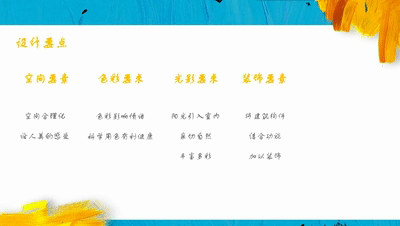

Drafting
 Floor Plan: After conceptualizing, first draw the floor plan of the room with a pencil at a scale of 1:50, adhering to the principles of reasonable design and comfortable spatial scale, and design furniture dimensions according to ergonomic principles.
Floor Plan: After conceptualizing, first draw the floor plan of the room with a pencil at a scale of 1:50, adhering to the principles of reasonable design and comfortable spatial scale, and design furniture dimensions according to ergonomic principles.
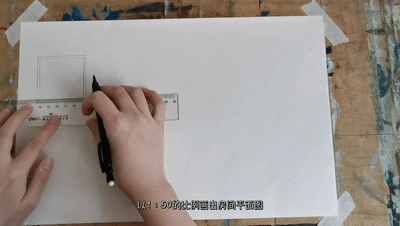
 Rendering: Based on the designed floor plan, draw the room’s outline and main furniture according to the rules of parallel perspective and two-point perspective, adding appropriate details.
Rendering: Based on the designed floor plan, draw the room’s outline and main furniture according to the rules of parallel perspective and two-point perspective, adding appropriate details.
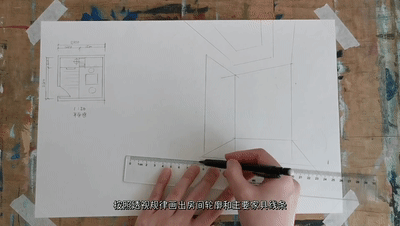
 Renderings are a commonly used expression technique in interior hand-drawing, providing accurate proportional scales while also offering a macro visual perspective.
Renderings are a commonly used expression technique in interior hand-drawing, providing accurate proportional scales while also offering a macro visual perspective.

Outlining
 After completing the draft, we use a fine pen or outlining pen to outline, paying attention to the relationship between line thickness and the overall contrast of solid and void (structural and contour lines are relatively thick, while decorative items and flooring are relatively thin), and we can refine details and shadows while outlining.
After completing the draft, we use a fine pen or outlining pen to outline, paying attention to the relationship between line thickness and the overall contrast of solid and void (structural and contour lines are relatively thick, while decorative items and flooring are relatively thin), and we can refine details and shadows while outlining.
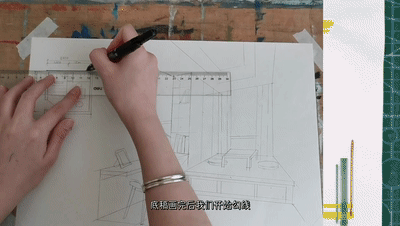

Coloring
 Design Color Tone, Overall Coloring: The main color tone for this room design is white, with some colorful elements. The white areas can be represented with light gray. When coloring with markers, pay attention to coverage and brush strokes, and a ruler can be used to assist in drawing lines.
Design Color Tone, Overall Coloring: The main color tone for this room design is white, with some colorful elements. The white areas can be represented with light gray. When coloring with markers, pay attention to coverage and brush strokes, and a ruler can be used to assist in drawing lines.
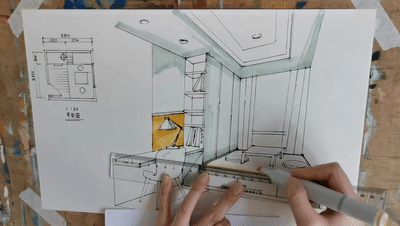
 Enriching the Picture, Handling Details: Deepen the dark areas and shadows, represent the texture of furniture, and pay attention to detailing and expressing light and dark relationships to enrich the overall indoor space. Finally, adjust the drawing to complete the rendering.
Enriching the Picture, Handling Details: Deepen the dark areas and shadows, represent the texture of furniture, and pay attention to detailing and expressing light and dark relationships to enrich the overall indoor space. Finally, adjust the drawing to complete the rendering.
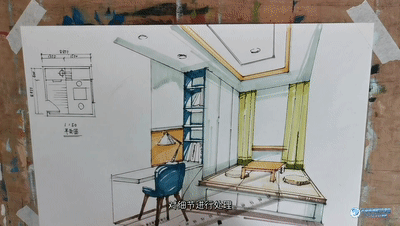
— Work Display —
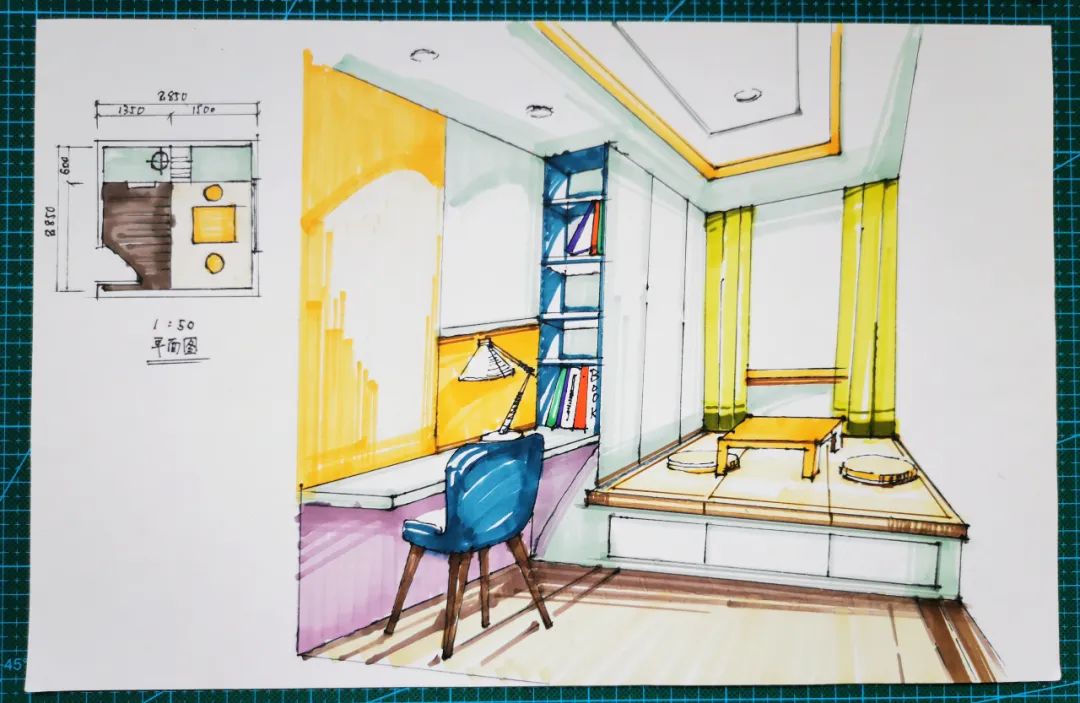
Conclusion: Design is based on scientific rationality, combined with the creation and enhancement of life art. Students, design serves people, making our lives better. In fact, each of us is the designer of our own lives, so let us unleash our creativity, express boldly, and design more works!


